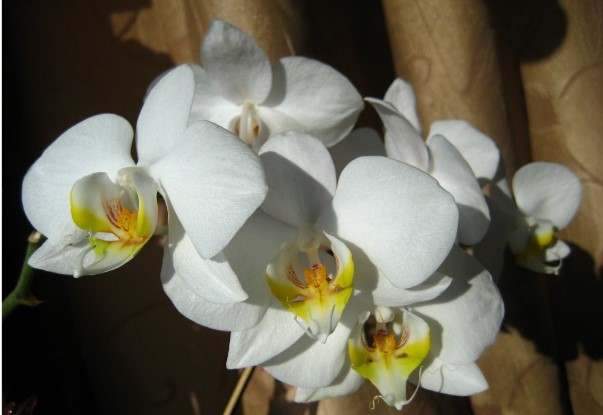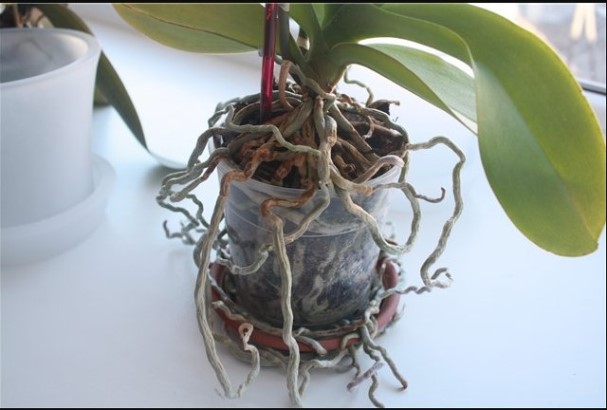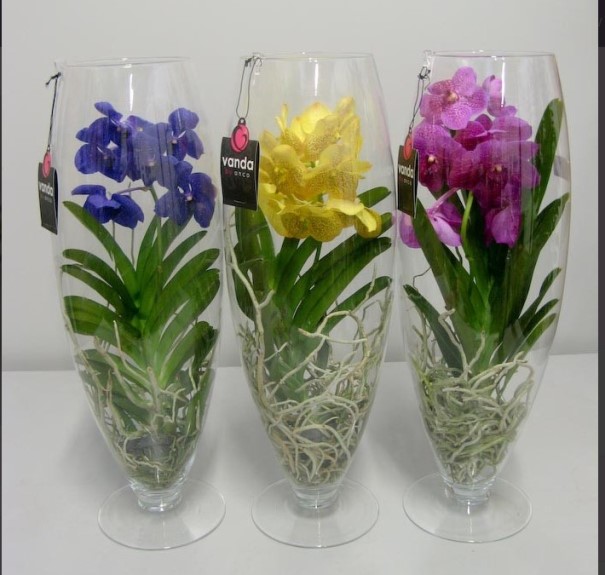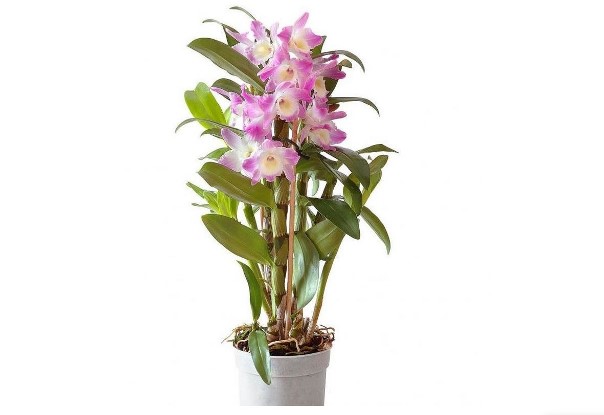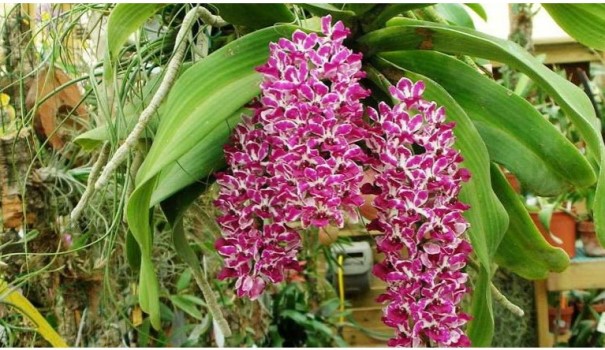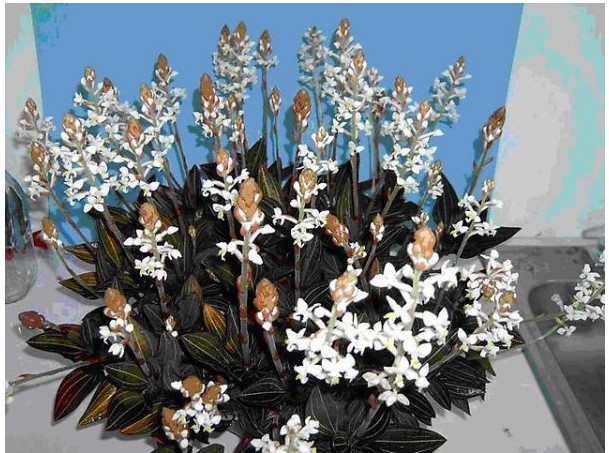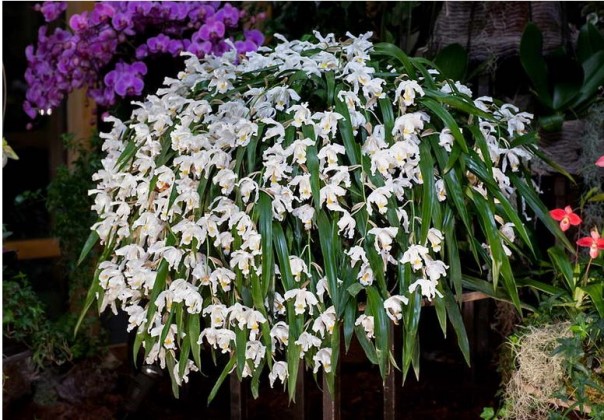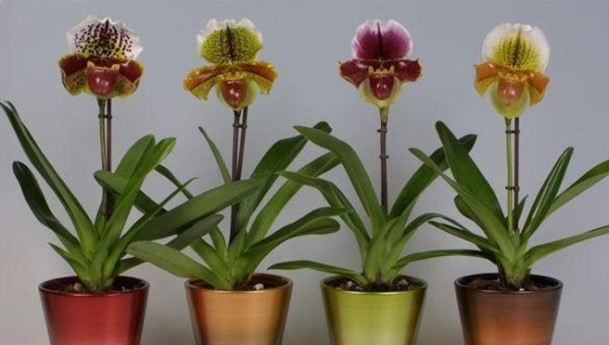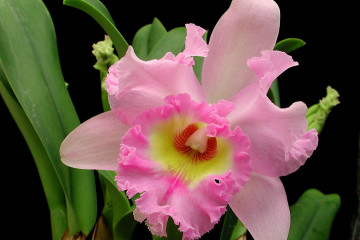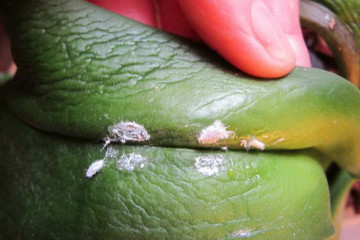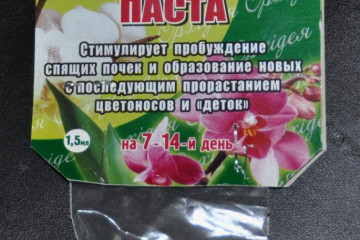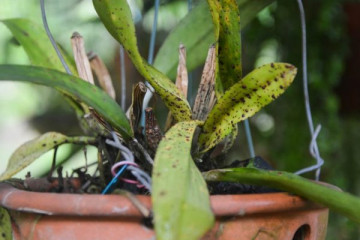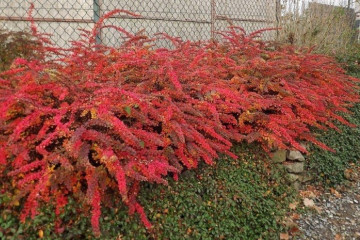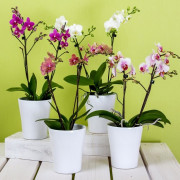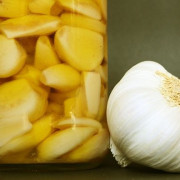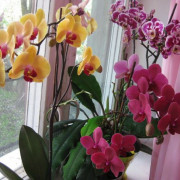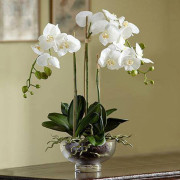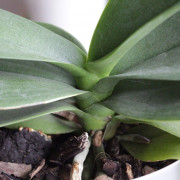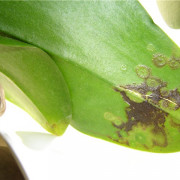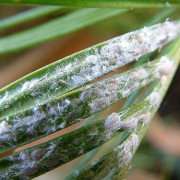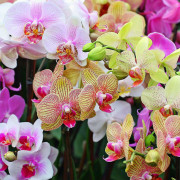Varieties and types of Orchids - description and care
Content:
Orchid varieties grow on the entire surface of the planet, have more than 3 thousand species in their assortment, many of them can be grown at home. Next, we will talk about the most popular forms of the plant.
Phalaenopsis orchid
Refers to the genus of epiphytic plants. These crops live on the trunks of other trees, but do not feed on their sap. Phalaenopsis in Latin means "similar to a butterfly", the flower received this name for the similarity of the petals with the wings of a moth. The first specimen was discovered in the 17th century by a Dutch botanist on an island in Indonesia.
The habitat of the species is the tropical rainforests of Australia, the Philippines, and South Asia. In captivity, the flower is used to decorate greenhouses, weddings, as an exhibition in botanical gardens. This is the most unpretentious type of orchid for pot cultivation. There are about 70 varieties of phalaenopsis orchids in the world; in indoor breeding, there are mainly species without aroma.
Phalaenopsis is an evergreen plant, rosette from 6 oval elongated leaves up to 30 cm in size. The tree throws out aerial roots that like to grow upwards.
Peduncles from 20 cm in length, sometimes branch, after the flowers fall off, they do not need to be cut, after a while there will be repeated flowering.
The flowers are delicate, like moths, 5 cm in diameter. Shades of inflorescences can be of all kinds. The most common colors are lilac, white orchids.
Among the variety of phalaenopsis, people know only a few. Below are the most spectacular and popular ones.
- One of the subspecies is the Multiflora orchid. This tree looks like a phalaenopsis, but it has a long flowering. The flower stalks of the culture can reach 60 cm and continue their growth during flowering, increasing the number of buds.
- The petals of the plant can be speckled, this variety was attributed to a separate species and became known as the Cleopatra orchid. The surface of the flowers is burgundy, red, orange spots on a white and yellow background.
- The Liodoro species is characterized by a pleasant aroma and long flowering - up to 2 years. In nature, pink Liodor orchids can be found only in northern Australia and eastern China.
Orchid Wanda
Orchid species include those that do not need soil, one of which is Wanda. The entire surface of the plant is located in one plane. The bush consists of fleshy, abundant roots, a straight stem, from which flat long leaves grow in both directions, at the top there is a bunch of bright flowers, which are most often of a purple hue.
The forest orchid grows on the trunks of tropical trees in Asian thickets, and is monopodial, that is, single-stemmed.
To grow Wanda's house, you need to provide the conditions that are closest to natural ones. The flower is hung on the wall in a basket or on a support, you can arrange the roots in a pot with large holes for ventilation.
Several times a day, the crown is sprayed from a spray bottle or an electric humidifier is installed in the room. Potless cultivation does not require transplanting.
Since the crop does without land, it must be fertilized. During the flowering period, the bush is fed with mineral fertilizers for orchids.
Cattleya Orchid
The habitat of the plant is diverse - it is found in low-lying areas in humid forests and on rocky mountain clones. Depending on the growing zone, the bush can be from 5 to 25 cm in size.
Cattleya can be identified by its large tubers up to 15 cm in size, they store moisture and help the crop survive during droughts.
The variety is striking in its massive flower compared to the small crown. Shades can be of all kinds, from purple-black to dazzling white, there are also red orchids.
Many people remember the unusual shape of the bud. It consists of 2 rounded curly petals, 3 pointed and a large lower one, which is called a lip and is always different in color from the rest.
Dendrobium Orchid
The flower confirms its orchid origin by its name. Denrobium translated from Greek means "living on a tree."
The plant is 2-3 straight fleshy stems 40-60 cm high, along the entire length of which are lanceolate leaves. Buds are laid in the axils of the leaves, from which five-pointed flowers bloom during the growing season. The diameter of the buds is 5 cm, the colors are purple, white, yellow.
To get wild flowering, you need to create favorable conditions for the culture. The plant is satisfied with night temperature drops, drying, winter reduction of dressings.
Rinhostilis Orchid
Rhynchostilis orchid looks like an open fan, this impression is created due to the fact that long leaves in a monopodial culture grow from one point of the stem.
The flower grows on trees in the tropics of Southeast Asia. A distinctive feature of this species is its luxurious flowering. On long peduncles, up to 60 flowers can bloom at once. The bud resembles a star with truncated edges, 2.5 cm in diameter, the shade of the petals can be white, purple, spotted.
The official botanical name is Rinhostilis giant, the plant received due to its exuberant flowering. Care as for most orchid crops is of increased importance, temperature from +25 to +30 degrees, abundant watering, dim light.
Orchid Aganizia
The wild orchid flower grows in the forests of South America, can be grown at home. According to the description, Aganizia is a short bush with long leaves that grow alternately from tubers (pseudobulb).
With proper care of the plant, flowering can be achieved from late winter to early summer. From the pseudobulb, a peduncle grows up to 30 cm long, on which up to 10 flowers with 6 petals are formed. The inflorescences fall 12 days after the blooming of the buds. The choice of shades is not great, it is mainly a blue and cream variety, occasionally a yellow orchid is found.
For the successful cultivation of varietal Aganizia, it is planted in a pine bark substrate with the addition of sphagnum. Tubers are important in the growing season of the bush, they cannot be buried in the ground, only young roots are underground.
Be sure to control watering - the rhizome must dry out before the next moisturizing. The premises provide high humidity, temperature +25 .. + 32 degrees and diffused light.
Ludisia Orchid
The plant belongs to a variety of orchids, which are valued not for the beauty of the flowers, but for the unusual shade of the leaves.
The shrub grows in Sumatra and the Asian region, mainly on land. The height of the tree does not exceed 15 cm, on the stems there are 5 pointed oval leaves of maroon color with green veins.
On a 20 cm long peduncle there are inflorescences in the form of spikelets of inconspicuous small white flowers with a yellow center.
Ludisia belongs to orchids that can be grown in universal soil, this dwarf species loves shade. In an apartment, a flower pot must be placed in a dark place, the temperature of the content is 20-22 degrees.
Other types
Orchid Oncidium is translated from Latin as "dancing pupae". The species received such a characteristic thanks to the touching small flowers. The bush is low, long narrow leaves grow from pseudobulbs, 1-2 times a year the plant gives a peduncle covered with bright inflorescences, most often of a yellow hue.
In nature, the tree grows in the tropics, the home content of Oncidium is also common, it is not difficult to care for under the right conditions. To stimulate flowering, the flowerpot is abundantly fertilized along the leaf and into the ground, and the temperature in the room is reduced.
The cellogyne cristata is the most graceful species with fringed white flowers 7 cm in diameter. The bush is inconspicuous, consists of round small tubers from which elongated oval leaves grow. Only delicate flowers are of decorative value. It is not difficult to take care of the culture in an apartment, care like all orchids. The pot is often watered, providing diffused light and airy soil. Under these conditions, the flowerpot should bloom.
Luisendorf is an imposing purple orchid flower of an unusual shape. It is a subspecies of Zygopetalum, easier to grow than the main species. It is appreciated for its attractive inflorescence and pleasant aroma It looks like a small bush with oblong leaves on the tubers. On the peduncle there can be up to 6 flowers up to 7 cm in diameter. The open bud consists of 5 pointed petals and a lower rounded one. The color is always dark, often monochromatic, occasionally speckled.
Orchid Lady's slipper is named so because of the similarity of the shape of the lower petal with a lady's shoe. Grows in East Asia, wild forms are found in Russian forests. In an apartment, you can achieve flowering - as a rule, it is a single flower at the top of a smooth thin peduncle. 3 narrow petals form a bud in the shape of a pointed star, the additional lower petal is much larger than the others and differs in shade.
The shape and color of the slipper orchid leaves may differ depending on the hybrid. These are 6-12 belt-like processes, they can be green or silvery, with dark spots or stripes.
The Brassia Orchid is a small perennial shrub that grows in the deciduous highlands of South America. The leaves of the tree grow from tubers, have the shape of an elongated lancet, there are not many of them, 5-8 pieces. A single peduncle up to 50 cm long grows from the sinuses, along the entire length of which there are alternately up to 15 flowers. The bud consists of sharp pancake petals, giving the impression of a large thorny star. Coloring - light yellow with burgundy spots.
Orchids conquer the hearts of flower growers with their unusual bush shape and delightful flowering. Breeders have worked hard and created hybrids that look even more chic than wild species. Adapted for indoor cultivation, many orchid varieties can be kept in apartments. A variety of colors will turn the room into a greenhouse.
